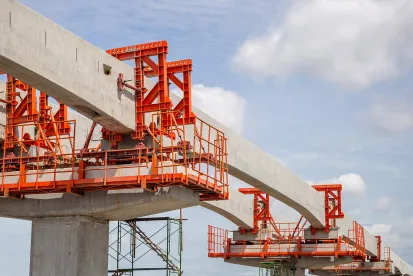“There won’t be an infrastructure bill unless we have a reconciliation bill. Plain and simple.” — U.S. House Speaker Nancy Pelosi, June 24, 2021
What’s happening on infrastructure?
On August 10th, the U.S. Senate passed a bipartisan infrastructure package (the Infrastructure Investment and Jobs Act) by a vote of 69 to 30. The legislation will provide an estimated $550 billion in new funding for roads, bridges, public transit, rail, electric vehicle infrastructure, airports, waterways, broadband, the electric grid, and other areas. The bill will be forwarded to the U.S. House of Representatives.
The budget resolution and the reconciliation process:
The Senate followed its infrastructure package by passing a budget resolution within 24 hours, with final passage at 4:00 a.m. on August 11th on a 50 to 49 party line vote. A budget resolution generally sets total spending, revenues, surplus or deficit levels, and public debt levels. It can also direct one or more committees to make changes in existing law to achieve budgetary numbers. These committee instructions in the resolution create the authority for a subsequent “reconciliation bill.” In the Senate-passed resolution, twelve Senate committees and thirteen House committees are authorized to develop a portion of a reconciliation bill within budgetary limits assigned to each committee. These committees are given a September 15th deadline to report their legislative proposals to the Budget Committee, which will assemble the aggregate reconciliation bill for floor consideration. But first, the House must pass an identical version of the budget resolution to establish the reconciliation process. Yesterday the House announced it would return during the week of August 23rd to pass the resolution.
A reconciliation bill receives expedited consideration, with time limits and a simple majority vote required in the Senate. It is not subject to Senate filibuster rules. However, budget rules also limit what can be included in such a bill, and extraneous provisions (like a minimum wage increase) and those that do not have a budgetary effect cannot be included.
How will the reconciliation process be used this year?
The budget resolution passed by the Senate would authorize a reconciliation bill that increases spending by $3.5 trillion over ten years, offset (at least in part) by increases in revenues. Democrats intend to use the reconciliation process to enact much of President Biden’s “Build Back Better” agenda. They intend to design legislation meeting the budget targets that may include, among other things, the following:
-
an extension of the child tax credit
-
paid family and medical leave benefits
-
clean energy investments
-
education funding (including free community college and universal pre-K)
-
manufacturing and housing investments
-
healthcare expansions (including home and community-based care, closing the Medicaid coverage gap, expanding Obamacare subsidies, and prescription drug reform), and
-
corporate tax reforms
However, as noted above, no authority for a reconciliation bill exists until both the House and Senate pass an identical budget resolution.
What happens next?
Based on the position taken by the Speaker, listed below is our best estimate of the order required to pass both an infrastructure bill and a reconciliation bill this fall. The first two steps were completed this week.
-
Senate passage of infrastructure legislation. (Passed 69 to 30, August 10th.)
-
Senate passage of budget resolution. (Passed 50 to 49, August 11th.)
-
House passage of budget resolution. (Considered the week of August 23rd.)
-
(If necessary, House and Senate must resolve budget resolution differences.)
-
Senate passage of budget reconciliation legislation. (Middle to late September.)
-
House passage of infrastructure legislation. (TBD.)
-
(If necessary, House and Senate resolve infrastructure differences. Infrastructure legislation is then signed by the President.)
-
House passage of budget reconciliation legislation. (TBD.)
-
(If necessary, House and Senate resolve reconciliation differences. Budget reconciliation legislation is then signed by the President.)



 />i
/>i

